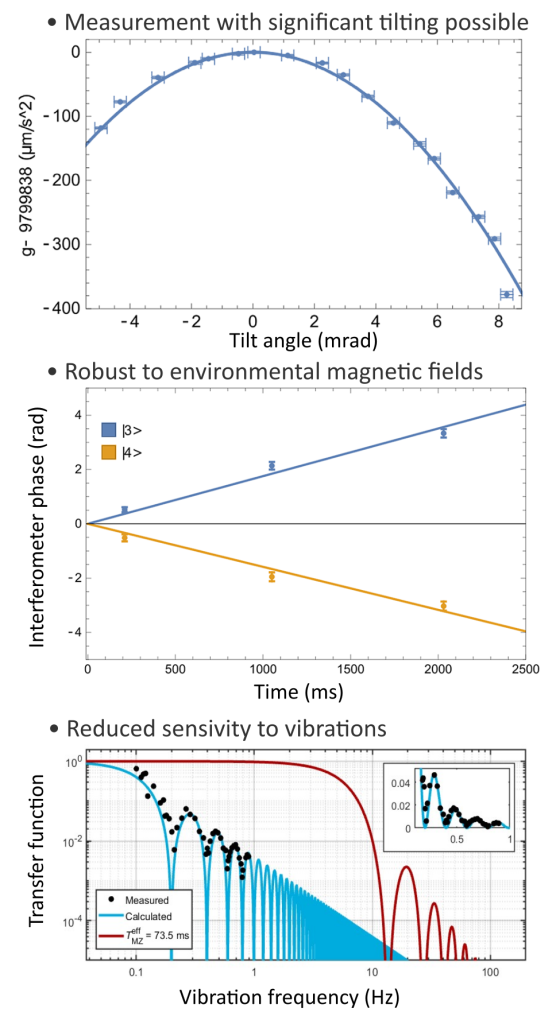Mobile atomic gravimeter

Gravity sensing has become a tool for geophysics applications, including in geodesy, measuring changes in the local groundwater levels, gravitationally assisted navigation, inertial sensing and more. Quantum sensors using atomic accelerometers and gravimeters have demonstrated state-of-the-art accuracy and long-term stability rivaling and sometimes surpassing classical sensors. They offer state-of-the-art accuracy and long-term stability, thanks to using the wavelength of a highly stabilized laser as reference.
However, they typically use freely falling atoms in atomic fountains, which not only limits their size but also their robustness to environmental factors, such as tilts, magnetic fields, and vibrations. Such limitations have precluded their broad adoption in the field, for geophysics, geology, and inertial navigation.
We have recently demonstrated atomic gravimeters based on holding atoms in an optical lattice, which are intrinsically more shielded from unwanted changes in the experimental environment. Such gravimeters suppress the influence of vibrations in the frequency range of 1Hz and above by several orders of magnitude relative to conventional atomic gravimeters, are robust to tilts with respect to the vertical and can suppress the effect of even strong environmental magnetic fields and field gradients by using atoms in two different atomic hyperfine ground states as co-magnetometers, potentially eliminating the need for shielding.
We plan to use these advantages to build an integrated compact optical lattice atomic gravimeter that will be set up on a mobile platform. We are also interested in the hybrid integration of the long-term stable atomic sensor with highly-sensitive mechanical sensors. Soon after construction, we aim to participate in a number of campaigns to test and demonstrate the performance of our mobile gravimeter in the field.
Selected Publications
- Atomic gravimeter robust to environmental effects. Cristian D. Panda, M Tao, M Ceja, A Reynoso, H Müller. Applied Physics Letters 123 (6) (2023) and https://arxiv.org/abs/2305.05555.
- Quantum sensing for gravity cartography. Stray, B., Lamb, A., Kaushik, A. et al. Nature 602, 590–594 (2022).
- Gravity surveys using a mobile atom interferometer. Xuejian Wu, Zachary Pagel, Bola S. Malek, Timothy H. Nguyen, Fei Zi, Daniel S. Scheirer, and Holger Müller. Science Advances 5(9), eaax0800 (2019) and arXiv:1904.09084.

